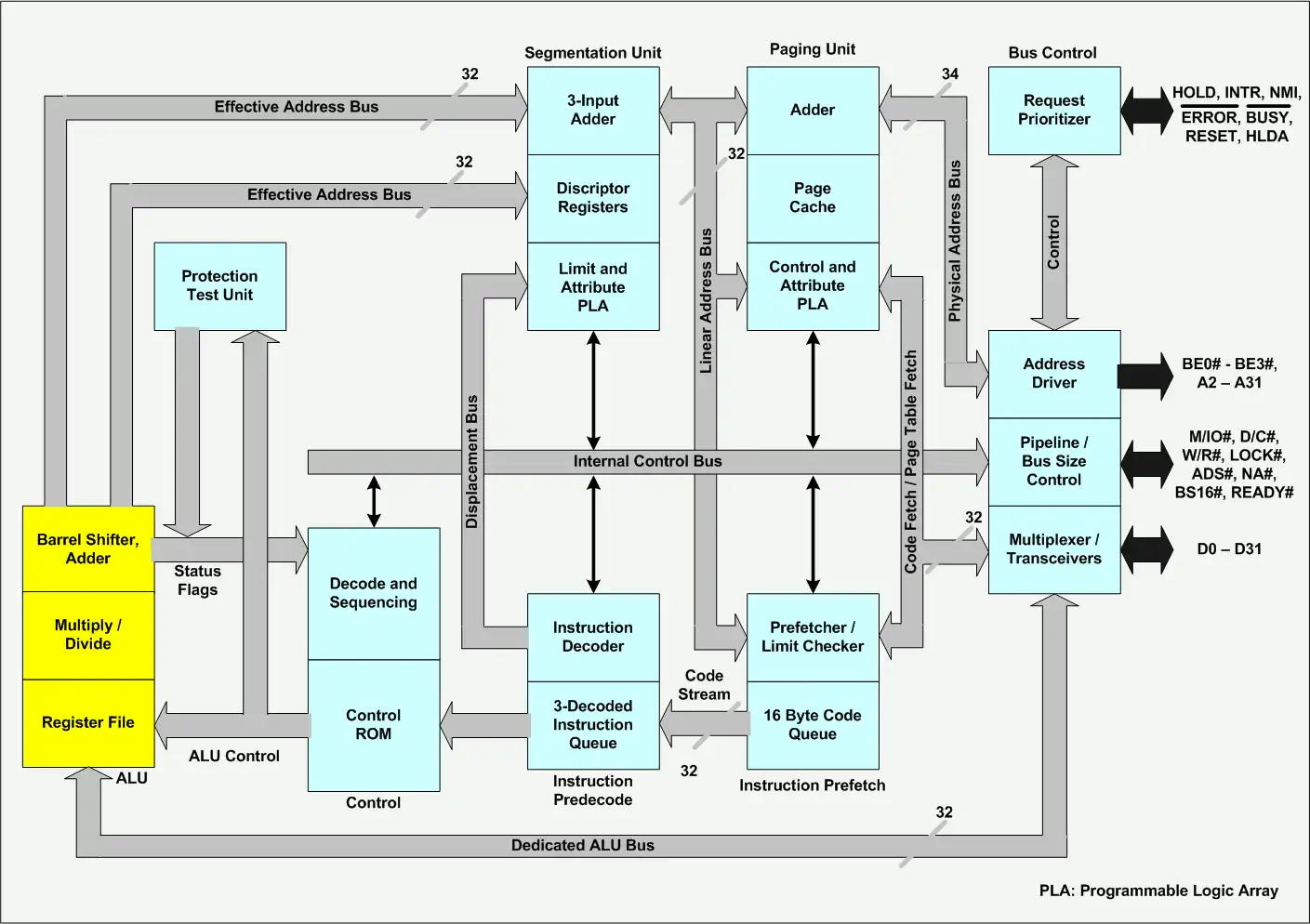
FM Towns Marty - Video Game Console
The FM Towns Marty computer was Fujitsu's attempt to convert the FM Towns computer platform into a video game console in 1993. The result was the worst of both worlds: too limited and underpowered as a computer, and too overpriced as a console. Compatibility was a problem, usually because of the Marty's limited and non-upgradeable RAM.
The FM-Towns Architecture was, like the Sharp X68000 series, serious about graphics. The system had hardware sprites, and could display up to 1024 sprites on screen simultaneously, each sprite being 16x16 in 16 colors. There was 128KByte of memory reserved for sprites. Although advanced, the Sharp X68000 had even better sprite hardware for serious action gaming.
Intel 80386 CPU
The Intel 80386, later renamed to i386, is a 32-bit microprocessor introduced in 1985. It was the 32-bit extension of the 80286 architecture. The instruction set, programming model and binary encoding are common throughout all 32-bit x86 processors, which is now referred to as the x86, or i386-architecture.
The 80386 can correctly execute code intended for the earlier 16-bit processors such as the 8086 and the 80286. Production of the 80386 processors was stopped in 2007. Even though the CPU was no longer used in PCs, it was still used in many embedded systems.


VRAM: 512kB
128kB Sprite RAM Sound Chip Rico RF5c68 / Yamaha YM2612 / CD-DA Sound 6 Channel FM
8 channel 10-bit PCM
1 channel 16-bit 44.1kHz PCM Display Chip Fujitsu Custom GPU Display 256x240, 256x256, 320x240, 360x240, 512x480, 640x200, 640x480, 720x480. Up to 16M colors. 16, 256 or 32K simultanous Best Color 16M Colors Best Graphics 720x480 Sprites 1024 16x16 Sprites in 16 colors System OS Towns OS / WIndows 95B / ORS2 Storage CD-ROM


